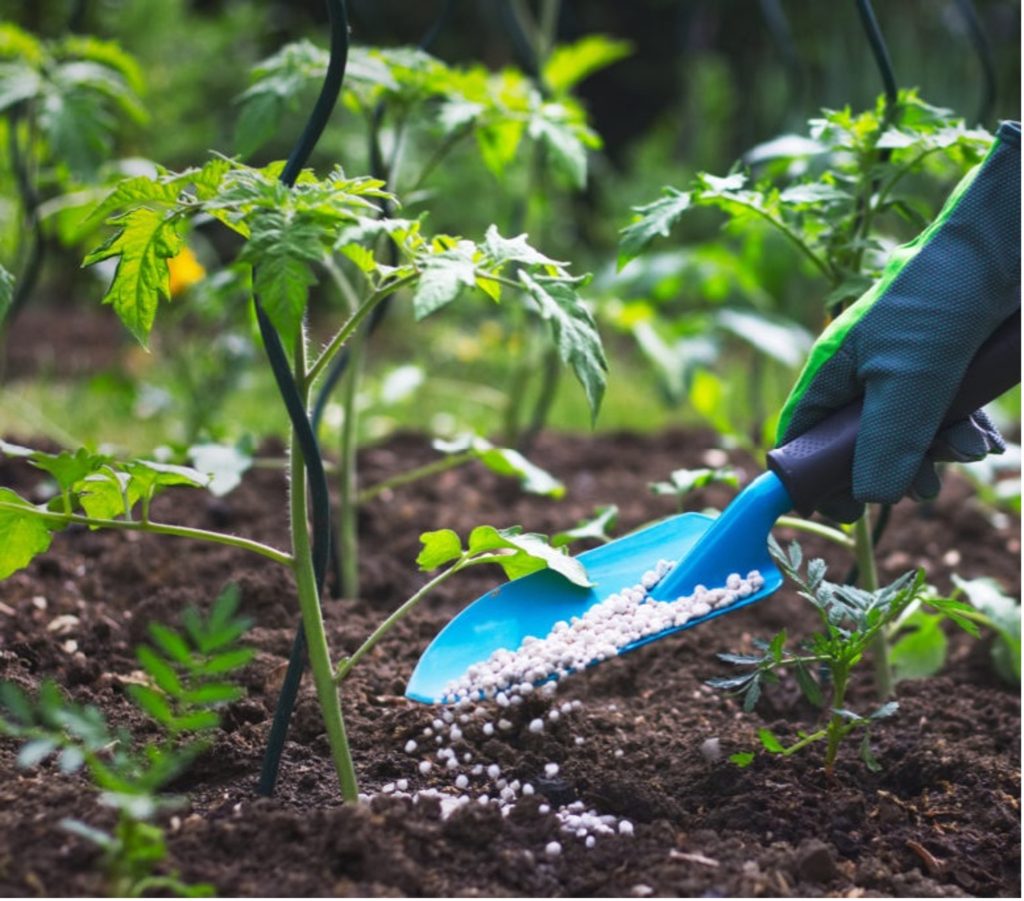
Nutrient Management – Tomato Plants
Tomato and other fruiting vegetables like pepper, eggplant, melons, etc., are staples of high economic importance in Nigeria. Nutrient management is critical in managing and increasing the yield of these vegetables.
Plants require a variety of nutrients to grow and thrive; they are the macronutrients and micronutrients. These nutrients are obtained from soil, air, or fertilizer. There are about fourteen (14) essential elements for plant nutrition; each of these elements has unique functions in the plants and level of requirement.
- Macronutrients: These are nutrients required by the plant in large quantities. They include:
- Primary nutrients – Nitrogen (N), Phosphorus (P), and Potassium (K). These are often represented as NPK on fertilizer bags, with numbers indicating the percentage of each nutrient in the fertilizer. For example, NPK 20:10:10 simply means that the fertilizer contains 20% nitrogen (N), 10% phosphorus (P), and 10% potassium (K).
- Secondary nutrients – Calcium (Ca), Magnesium (Mg), and Sulphur (S).
- Structural nutrients – Carbon, Hydrogen, and Oxygen. These are gotten from the air.
- Micronutrients: These are nutrients required by the plants in small quantities. They include Iron, boron, copper, manganese, and zinc.
Nutrients and their Functions
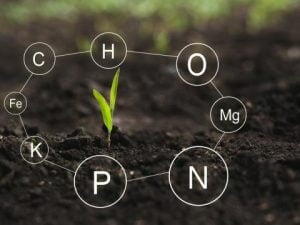
Tomato and other vegetable plants require nutrients for their growth and development. It is important to note that even the best tomato seeds and varieties in Nigeria will not yield well without adequate nutrients. Many farmers use only N-P-K in growing plants, forgetting that the secondary nutrients (calcium, magnesium, and sulfur) and micronutrients (boron, manganese, zinc, copper, etc.) play a vital role in the overall development of the plant. Below are some nutrients and their functions in the development of tomato plants:
- Nitrogen: This is needed to grow and develop the plant leaves and stems. It plays a role in producing amino acids, the building blocks of proteins. Nitrogen can be obtained from aged compost, poultry, cow, and rabbit manure. It can also be obtained from N-P-K fertilizers, urea, and soluble fertilizers.
- Phosphorus: This helps grow and develop a strong root system. It is usually needed during the early stage of plant growth to promote longer growing seasons. Phosphorus is also important in the development of flowers and fruits. It plays a vital role in photosynthesis, providing the energy required for nutrient transport within the plant system.
- Potassium: This is needed to produce starch and protein, which provide energy for the plant’s growth and development. It enhances fruit quality and improves disease resistance in the plants. Potassium also plays a critical role in regulating the stomata and water balance of the plant.
- Calcium: This is essential for the proper functioning of the plant’s transport system, moving water, nutrient, and sugar throughout the plant. It helps develop and grow cell walls, which provide structural support to the plant. Calcium plays a critical role in the development and maturation of fruits.
- Magnesium: This helps produce chlorophyll, helping the plant convert light energy into chemical energy. It also plays a role in activating enzymes necessary for the plant’s growth and development.
- Sulphur: This helps produce essential amino acids and proteins for plant growth. It also helps produce vitamins such as thiamine and biotin, which are key in defending the plant against disease.
- Iron: This is an important enzyme component that helps produce chlorophyll. It is also necessary to properly function the plant’s respiratory system.
- Copper: This plays a vital role in several plant processes, such as enzyme activation and disease resistance. It is also required to function the plant’s respiratory system properly.
Fertilizer Requirement of Tomato Plant
The source of fertilizer for nutrient management for tomato plants in Nigeria can be organic or synthetic fertilizer. The organic fertilizer sources include cow, horse, pig, rabbit, and poultry manure. The synthetic sources of fertilizer from NPK 20:10:10, 15:15:15, 20:20:20, potassium nitrate, calcium nitrate, magnesium sulphate, and the like.
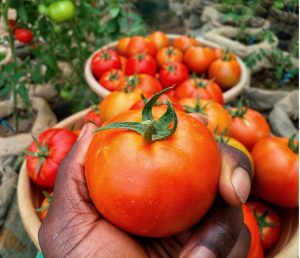
The fertilizer/nutrient requirement of tomato plants depends on the growth stage. These stages are:
- Vegetative stage: is the first stage in tomato growth; usually between 0-7 weeks. This is the stage when the plants are producing leaves (not flowers). At this stage, the plants require a high level of nitrogen; this is needed for rapid development of the plant tissues. It is advisable to use fertilizer high in nitrogen such as NPK 20:10:10 or urea.
- Flowering stage: This is the stage where the tomato commences flowering, usually between 7-12 weeks. At this stage, the plant requires a high amount of potassium. It is recommended one use NPK 15:15:15 or 12:12:17 and potassium nitrate.
- Fruiting stage: This is the stage where the tomato plant commences fruiting. At this stage, the plants require a high amount of magnesium and calcium. This help with fruiting and prevention of fruit diseases such as blossom end rot (BER). It is recommended that one use CalMag, calcium nitrate or magnesium sulphate.
Nutrient Deficiencies and their Symptoms
When the tomato plants are not getting the required nutrients, it will show in the form of yellowing of the leaves, stunted growth, and poor flowering/fruiting. Tomato plants may suffer from a variety of nutrient deficiencies. Below are common nutrient deficiencies of tomato plants and their symptoms:
- Nitrogen deficiency: A tomato plant that lacks nitrogen will have yellowing leaves and stunted growth. The yellowing of leaves indicates chlorophyll is not being produced properly. The stunted growth results from the plant not having sufficient energy to grow.
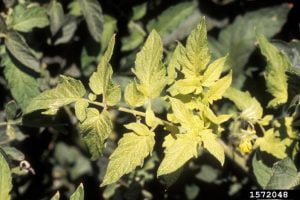
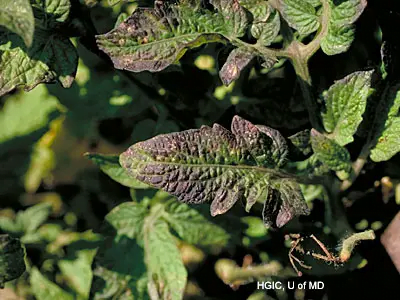
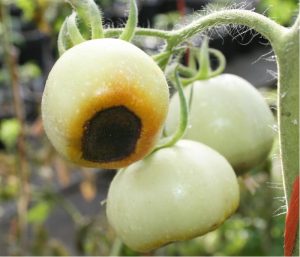
- Phosphorus deficiency: The plant may have stunted growth and the leaves may turn dark green or purple. The plant may also have poor root development and difficulty in setting fruits.
- Calcium deficiency: The tips and edges of the leaves may turn brown and die. The fruits may be of low quality, having blossom end rot.
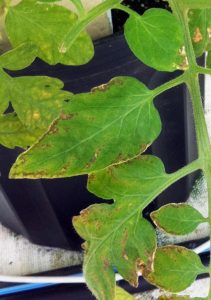
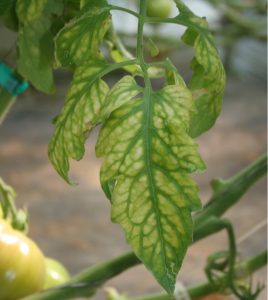
- Potassium deficiency: The leaves may turn yellow between the veins, and the edges of the leaves may curl or scorch. The plant may also have poor fruit development, poor fruit quality, and increased disease susceptibility.
- Magnesium deficiency: The older leaves turn yellow between the veins, leaving the veins green in colour. This is a sign that the plant is not producing chlorophyll.
- Iron deficiency: The new leaves turn yellow while the veins remain green.
- Copper deficiency: The symptom of copper deficiency is stunted growth, wilting, and discoloration of the leaves.
In Nutrient Management of Tomato Plants, it is important to note that other factors, such as pests and diseases, can also cause these symptoms. It is best to consult an experienced agronomist to confirm and manage accordingly.
Seedforth Agro, is the sole distributor of Rijk Zwaan‘s quality vegetable seeds, such as tomatoes, sweet peppers, hot peppers (habaneros), cucumbers, lettuces, cabbages, and many more. You may contact us via www.seedforthagro.com for your vegetable seed needs.
